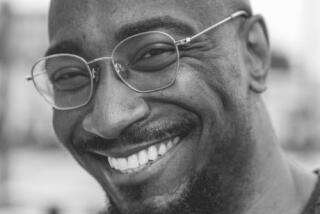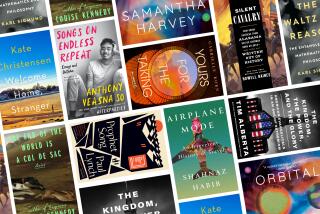Word Play: Return to a recycled planet
A large part of the appeal of science fiction and fantasy lies in the imaginative worlds the authors create. In “Incarceron” and its sequel, “Sapphique” (Dial Books: $17.99, ages 12 and up), Catherine Fisher shows herself to be not only an expert world-creator, but also an accomplished juggler. In her story, two extraordinary worlds are in communication. One of the mysteries of the tale is where these worlds lie in relation to each other; another is how the author manages the intricate rhythm and tensions between the two.
Claudia lives in a futuristic society. After great destruction in a period referred to as the “Years of Rage,” a long-ago king decreed an end to progress and chose a single historical period for its stability. People now live under an artificial medieval protocol, hunting with falcons and living in castles while hidden high-tech devices maintain the illusion of their world. All trouble-makers were exiled to a sealed prison called Incarceron, where a self-contained society would begin from scratch: a perfect world.
Finn, a prisoner in Incarceron, who is convinced by flashes of memory that he came from “outside,” is seeking a means of escape, while Claudia, the daughter of the prison warden, is trying to avoid a politically arranged marriage. She believes that Finn is the lost heir to the throne and her true fiancé. A pair of mysterious crystal keys allows them to communicate, breaking the centuries-old silence between the realms.
At the end of “Incarceron,” Finn has been sprung from the prison but remains bound by his promise to help his blood brother, Keiro, and another friend, Attia, escape. Unprepared to step into the role of prince and heir in the Realm of Protocol, Finn flounders in the web of court intrigue, strengthening the queen’s plot against Claudia. Although the crystal keys have been lost, there exists a legend of another way to escape the prison, the legend of the sorcerer Sapphique, which seems to beguile even the strange creature that is Incarceron.
Strange creature? Incarceron itself is a sentient being, a kind of chilly Mother Earth counterpart, whose vast halls and corridors contain forests, oceans, deserts, teeming populations. After years of running the intricate prison systems, Incarceron has developed a personality, a bit like Hal 9000, the creepily human computer of “2001: A Space Odyssey.” Incarceron even dreams; it longs to be able to look outside itself, to see the stars.
But Incarceron is a closed system, hermetically sealed from the outside, endlessly feeding on itself. Mechanical beetles scurry about everywhere, scavenging all debris, flesh as well as circuitry, to be refashioned into new creatures and machines. After running for centuries on recycling mode, Incarceron is beginning to run out of undamaged material, and the results are beginning to show.
In all this cobbled together flotsam, “half-men,” hybrid creatures with mechanical bits, are a horror, and Keiro is a miracle: handsome, perfect, straight and strong. Is it any wonder he is so vain? But even he hides a secret mark of Incarceron — a hidden terror that adds depth to his character.
The characters are the reason the story is so compelling, for a fascinating world alone never carries a fantasy. The bond between the blood brothers — “oath brothers,” they are called here — is complicated by Finn’s longing for another world and by Keiro’s ambition to rule the one world he knows. Attia’s transformation from faceless slave to brave companion makes her a captivating sidekick. And although it’s easy to assume romance in a story of a lost prince, Claudia and Finn’s relationship is not just another teen romance; it’s not even very sexy, but much more interesting for that. Loyalty is the strongest love here, and friendship the truest bond.
The emotional rewards of Fisher’s story are great, but, as in the best science fiction, so are the philosophical ideas. Like Suzanne Collins, the author of the “Hunger Games” series, Fisher seems to have been reading the news of our day and concluding — how could one not? — that war is the permanent state of the world. She seems resigned to the idea that humans, no matter how well-intentioned, carry chaos and violence with them. But in this series, there is hope in the connections people make with each other, and in the ideas they pursue.
What is freedom? Finn escapes the harsh life of the prison only to find himself more ensnared in the outside world, but he never forgets his friends, so he never fails himself. What should parents desire for their children? To be safe, or to realize their ambitions? Incarceron’s paternal chilliness has an echo in Claudia’s father, the warden.
Eventually any informed reader of this pair of books will think: Isn’t Incarceron’s endless recycling precisely the system of life on Earth? We are all made of recycled bits. Every atom in our world has been here since the beginning of time; the freshest flower as well as the most perfect infant is made of recycled bits. What kind of prison do we live in, and what kind of life represents the best escape?
Word Play appears monthly at https://www.latimes.com/books.
More to Read
Sign up for our Book Club newsletter
Get the latest news, events and more from the Los Angeles Times Book Club, and help us get L.A. reading and talking.
You may occasionally receive promotional content from the Los Angeles Times.






